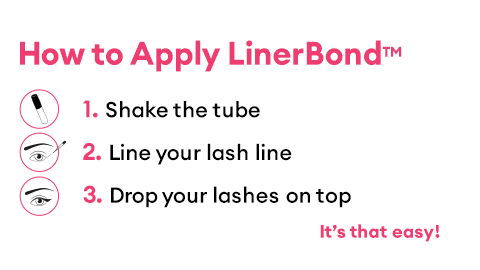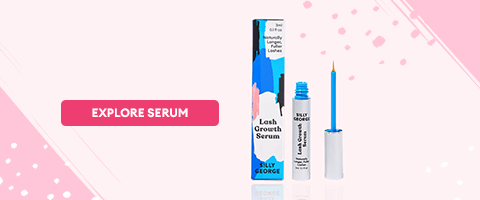Semi-Permanent Lash Glue: Is It Safe?

If you have ever bought lash extensions, or you’re just thinking about it, then answering this question is pretty important. But, you ask, what does semi-permanent lash glue have to do with lash extensions? Well, let’s find out....
When would you use semi-permanent lash glue?
Whereas daily false lashes can be applied in a host of different ways, from magnetics to adhesive, longer-lasting lash treatments like lash extensions require a much stronger glue in order to hold them in place for weeks at a time. This stronger glue is known in the business as semi-permanent lash glue.
What’s in semi-permanent lash glue?
90% of semi-permanent lash glue is made of a substance called cyanoacrylate. Cyanoacrylate is basically just a strong, fast-drying adhesive which is used in many different products, perhaps most famously in the Super Glue you keep in your drawer at home. But don’t worry, the glue used on your lash extensions isn’t Super Glue! The semi-permanent lash glue that holds your lash extensions in place is actually a special formulation of cyanoacrylate designed to be used with cosmetics.
Is semi-permanent lash glue safe?
Cyanoacrylate has been approved by the FDA and is specially formulated for use with lash extensions, so most, people will find it is completely safe to use. However, as a man-made substance, there may be rare instances when it provokes an allergic reaction. For this reason, it’s a good idea to ask your lash extension technician to do a quick patch test before your treatment.
Some semi-permanent lash glues can also contain latex. Why? Well, although latex might only make up 1-2% of a lash glue, it’s used to make the lash glue more malleable to apply. Whilst latex is safe, a latex allergy is much more common than a cyanoacrylate allergy, so you should always check in advance whether the lash glue being used with your extensions contains latex.
If you are exposed to lash glue that contains latex, and you are allergic, you are likely to notice redness and irritation around your eyes. These symptoms will usually recede after 24 hours, but if they continue then you should see to a doctor.
Can you remove semi-permanent lash glue?
Without any intervention, your lash extensions will shed naturally with your real lashes after around 6-8 weeks. However, if you decide that you want to remove your lash extensions earlier, take care. The lash glue used in lash extensions is far stronger than anything you would use for daily false lashes, so it’s not something you can remove easily at home.
Sure, there are lots of tips on the internet about removing false lashes with home remedies like vegetable oil, but what’s likely to happen instead is that you’ll end up removing some but not all the glue. So, when you start pulling off your lash extensions, you might accidentally pull out your natura lashes too.
The best thing to do? Go back to the salon where you had your lash extensions applied and have a trained technician remove them for you. It will cost a little extra, but it’s a small price to pay to keep your lashes safe!
Are extensions worth it?
We’ve just spent a lot of time talking about glue, haven’t we?! If, after reading this, the whole lash extension thing sounds like a load of work, you should know that there are plenty of far simpler alternatives.
1) Daily False Lashes – boost your natural lashes in an instant with easy, breezy, daily false lashes. Think applying lashes daily is a bore? Just try our revolutionary LinerBond™ adhesive eyeliner! It applies lashes in seconds and wipes off just as easily, plus it’s also dermatologically tested to be kind on even the most sensitive skin, meaning you can get long, beautiful lashes which are 100% safe with absolutely no fuss!

2) Lash Growth Serum - the perfect way to increase your natural lash length without using false lashes. Apply a lash growth serum to your natural lashes daily, and you’ll see results after just 4 weeks!











